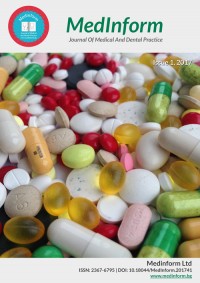Issue One 2017
2017, Vol. 4, issue 1, (March)
Original Article
Studying the Effects of Autoclaving Process on Orthodontic Archwires
Abstract:
In the orthodontic practice during treatment with fixed appliances, different types of wires made of different metal alloys, by different manufacturers are used. However, there is lack of precise information about their composition, structure and optimal length of stay in the patient’s mouth. This information is important because it helps orthodontists to choose the appropriate archwire for the proper stage of orthodontic treatment. The most commonly used ones are the following types of orthodontic wires: stainless steel, nickel-titanium, titanium-molybdenum and heat- activated. Medical standards for the prevention and control of nosocomial infections aim to improve the quality and safety of medical care by reducing the incidence of nosocomial infections and by limiting the spread of antimicrobial resistance. In this regard, it is important to know whether autoclaving may be carried out in all types of orthodontic wires and to ensure that the autoclaving process does not affect the chemical composition and surface structure of the archwires. The aim of this work is to investigate the effect of the process of autoclaving stainless steel, nickel-titanium, titanium molybdenum, heat-activated nickel titanium and copper-nickel-titanium orthodontic archwires with the same dimension and size of 0.016×0.022 inches. The analysis was carried out via the following independent techniques: X-ray diffraction analysis (XRD), Scanning Electronic Microscopy (SEM), Energy Dispersive Spectroscopy (EDX) and Differential Scanning Calorimetry (DSC).It has been established that the autoclaving process does not affect the chemical composition and surface structure of the archwires and does not lead to the deterioration of their properties.
Authors:
Valeri Petrov; Faculty of Dental Medicine, Medical University Sofia,St.Georgi Sofiiski Blvd., 1431 Sofia, Bulgaria;Ivana Ilievska; Institute of Solid State Physics, BAS, 72 TzarigradskoChaussee Blvd., 1784 Sofia,Bulgaria;
Laura Andreeva; Faculty of Dental Medicine, Medical University Sofia,St.Georgi Sofiiski Blvd., 1431 Sofia, Bulgaria;
Valdek Mikli; Centre for Materials Research, Tallinn University ofTechnology, Ehitajate 5, Tallinn 19086, Estonia;
Andrzej Zaleski; Institute of Low Temperature and Structure Research, PolishAcademy of Sciences, ul. Okolna 2, 50-422 Wroclaw,Poland;
Angelina Stoyanova-Ivanova; Institute of Solid State Physics, BAS, 72 TzarigradskoChaussee Blvd., 1784 Sofia,Bulgaria;
Corresponding Author:
Dr. Valeri Petrov; Email this authorAngelina Stoyanova-Ivanova; Email this author

